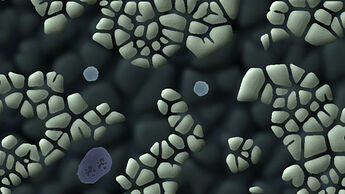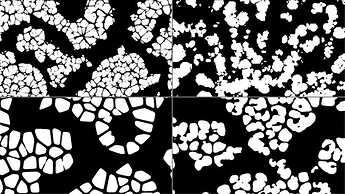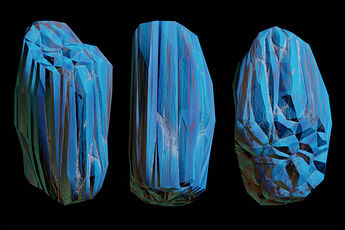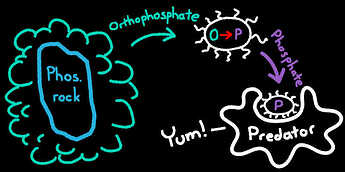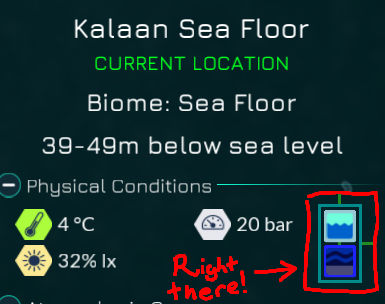Reading this, my initial thought was just to flood the screen with rocks. Sounds like a physics nightmare though.
Then I figured you could just create a landscape of static obstacles. Use a voronoi texture, add a bit of magic, and you get a maze of sand grains.
You can make a variety of interesting textures.
Then I realized that not being able to push things out of the way effectively puts an upper limit on your organism’s size. You could make it a fractal so that there would always be larger and larger corridors for larger organisms, but you could still get stuck if you grew too large without migrating to a larger area. Bad idea.
So, shelving for the moment the idea about hiding in the sediment, what about obtaining phosphates from the mineral suspension?
As well as this, small Cyanobacteria could attach to the floor to provide phosphates, that can’t be made by organelles.
Yes, phosphates! Behold, the phosphate rock:
Modeled after a chunk of apatite, a calcium phosphate mineral that releases useable phosphate into soil through weathering. You could use any other phosphorus mineral, though, if this is one looks too blue and chunky.
Anyway, the idea is that, like iron rocks, phosphate rocks would slowly produce turquoise compound clouds. The compound (call it orthophosphate or something) would be converted into useable phosphate by a protein/organelle like this guy:
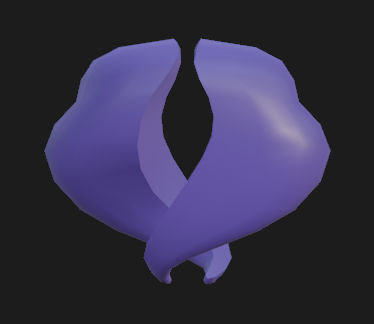
…very loosely modeled after glucose oxidase, a protein some fungi use to convert glucose into gluconic acid which is then used to liberate phosphate from natural sources. The phosphate could then be used by them or anything that eats them.
Here is a very detailed and informative diagram illustrating the whole process.
This, used together with nitrogen fixation, finally gives sessiles a way to evolve without chasing compound clouds!
…if only the sea floor had a form of energy that sessile organisms could use. So… maybe also not a great idea?
Maybe just fill the screen with microbes and say it’s a realistic simulation of a microbial mat. Done and done.
( ´ ▿ ` ) This is also my dream. Too bad sessile gameplay is boring…
